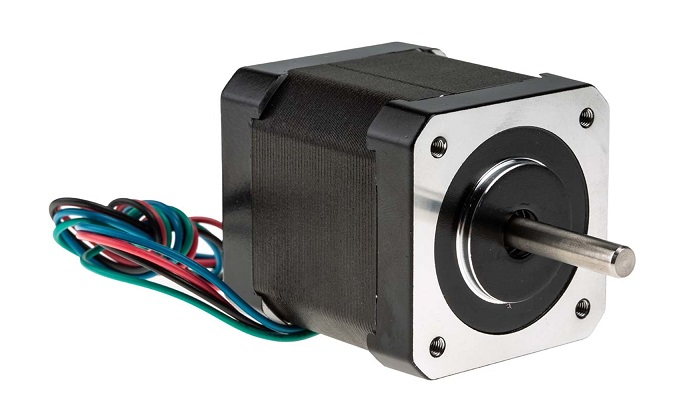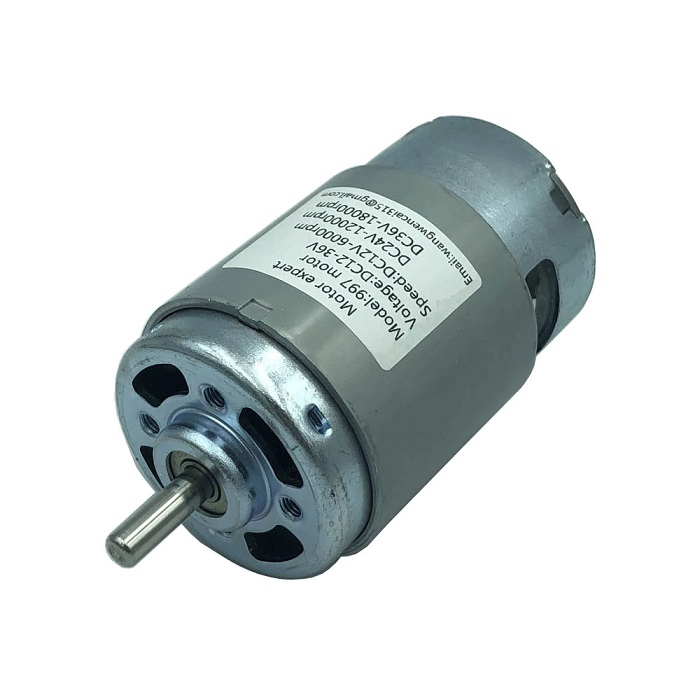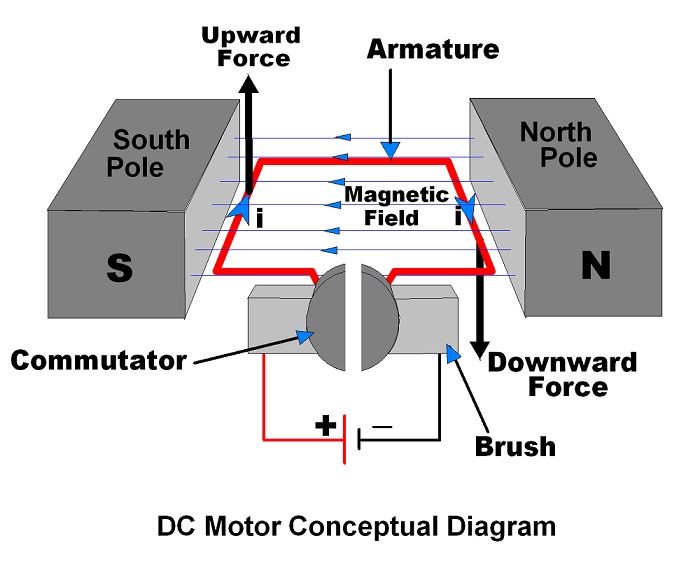It has become harder to choose the right electric motor for a project due to the advancements of motor technology in recent decades. Selecting the idol motor for different applications depends on some design criteria such as positional accuracy requirements, cost, availability of drive power, torque, and acceleration requirements. DC motors and stepper motors are best for different applications. Many people are under the misunderstanding that there is an enormous difference between stepper motor and DC motor.
The key distinction is that, whereas stepper Motors may push harder from a standstill, DC motors offer a longer-lasting output. Between electrical equipment in electric systems, stepper motors and DC motors are key products. Several Suppliers and Companies, as well as other manufacturers and distributors, supply Stepper Motor and DC Motor, and there are several Stepper Motor and DC Motor For Sale on Linquip.
There is a comprehensive list of Stepper Motor and DC motor services on the Linquip website that meets all of your needs. Linquip can connect you with a number of industrial Stepper Motor and DC motor service suppliers and experts who can help you. Linquip has a team of Stepper Motor and DC Motor Experts ready to help you test your equipment.
Here we provided a brief description of the differences between these two motors. Read this new blog in Linquip to find out more about them.
Stepper Motor
First, let us have a quick review of the stepper motor and DC motor before we dive into the differences between these two.
Stepper Motors are also electromechanical actuators that convert a pulsed digital input signal into a discrete mechanical movement. As its name implies, the stepper motor does not rotate in a continuous fashion and moves in discrete steps or increments. A Stepper Motor is particularly well suited to applications that require accurate positioning and repeatability with a fast response to starting, stopping, reversing, speed control, high holding torque, and lower acceleration.
Another key feature of the stepper motor is its ability to hold the load steady once the required position is achieved. They widely find use in industrial control applications. In a stepper motor, the input is in the form of electric pulses, and the output is in the form of mechanical motion that is unobtrusive in nature. It provides control as an advantage over mechanical power generation and should be used if accuracy is a primary concern.
DC Motor
DC Motors are also electromechanical devices that use the interaction of magnetic fields and conductors to convert electrical energy into rotary mechanical energy. These motors have been around since the 1830s and so have been used in a variety of applications. They are relatively cheap to both purchase and install, are reliable and controllable, and come in hundreds of ratings.
The DC motor, due to its improved working characteristics is still best used in applications requiring constant torque across the motor’s speed range. It is fast and continuous rotation motors mainly used for anything that needs to rotate at a high rotation per minute (RPM), and examples are; fans being used in computers for cooling or car wheels controlled by radio. The DC motor is a tried-and-true workhorse of industry with both the power and the endurance to still compete with modern ones.
Stepper Motor vs. DC Motor
Both two designs work in many areas of industry, so the difference between stepper motor and DC motor would be confusing to understand. Selecting between a DC motor and a Stepper Motor can be quite a task. Several factors play an essential role in choosing the best electric motor for your application. Here we compare some attributes between these two.
Nature of loop
- The stepper motor operates in an open-loop.
- The DC motor operates in a closed-loop.
Efficiency
- The stepper motor consumes current at max load whenever the stator poles are energized, both reducing the energy efficiency and increasing losses due to heat. Stepper motors are, therefore, not the best motors if efficiency is of concern.
- The DC motor is a mature technology, and its efficiency has been optimized to around 85%, which is quite good for such a simple motor.
Applications
- The stepper motor often finds use in 3D printers, CNC machines, medical imagery machinery, printers, security cameras, and other precisely controlled applications.
- The DC motor finds use in phone vibrators, power tools, car windows, cranes, conveyors, and many more applications that prioritize both sustained output power and price.
Control characteristics
- The stepper motor is so easy to use, but require some form of a microcontroller to help synchronize their rotor from one pole to the next.
- The DC motor requires an input voltage to its two leads and does not require external inputs for operation.
Speed Range
- The speed range of stepper motors is typically below 2000 RPM, as their torque decreases as speed increases. They are also not meant for continuous use, as stepper motors tend to run hot when powered for long periods of time.
- The DC motor comes in a variety of forms, offering a much wider range of speeds as a result. The speed of the motor can be controlled by using a variable supply voltage or by changing the current strength.
Brushes
- The stepper motor is a brushless motor.
- The DC motor contains brushes that cause problems such as wear and tear and sparks.
Motion and displacement
- The motion of the stepper motor is incremental, and resolution is limited to the size of the step.
- The DC motor has a continuous displacement and can be controlled accurately and positioned exactly.
Response time
- In the stepper motor, response time is slow.
- Feedback control with a DC motor gives a much faster response time as compared to a stepper motor.
Effect of overloading
- The stepper motor can be slipped if overloaded, and the error cannot be detected.
- In DC motor relays and overload protecting devices come into at the time of overloading and protect the motor from any damage. So, If an overload occurs, it can be detected.
Few points about stepper motors and DC motors to keep in mind:
- Stepper motors provide their maximum torque at low speeds, which makes them especially useful in high precision, holding applications such as robotics, 3D printers, and similar devices where the position is fundamental. Some DC motors also generate high torques at low speeds but are more suited towards continuous uses, as their torque is constant over their speed range. The main difference is that, while stepper motors can push harder from rest, DC motors tend to have more sustained output.
- A DC motor cannot control the position of the rotor, while a stepper motor has the ability to control the position of the rotor.
- Both of these motor types are inexpensive, so the purchase price is of little concern. DC motors and stepper motors are useful for applications where the price must be minimized.
- Both the stepper motor and DC motor are reliable, with caveats. When stepper motors are not run continuously, they can easily reach 10,000 hours of useful life or almost five years of use. DC motors can also run this long depending on the type chosen, but require constant maintenance to prevent failure.
From this comparison, it is clear that they are both cheap and easily controlled, and while both runs on DC current, their structures, operating principles, and functions are distinct, and both motors serve different purposes.
So, there you have a detailed description of the difference between stepper motor and DC motor. If you enjoyed this article in Linquip, let us know by leaving a reply in the comment section. Is there any question we can help you through? Feel free to sign up on our website to get the most professional advice from our experts.
Buy Equipment or Ask for a Service
By using Linquip RFQ Service, you can expect to receive quotations from various suppliers across multiple industries and regions.
Click Here to Request a Quotation From Suppliers and Service Providers
Download Difference Between Stepper Motor and DC Motor PDF
Read More on Linquip
- A Simple Guide to the Difference Between Motor and Generator
- A Complete Guide To The Difference Between Brushless Motor and Brushed Motor
- What is Starter Motor: Comprehensive Overview
- Difference Between Single Phase and Three Phase Induction Motor: All you need to know
- Working Principle of Stepper Motor: The Only Guide You’ll Ever Need
- Working Principle Of DC Motor: 2022 Complete Guide
- DC Motor Efficiency: Calculation: Formula & Equation
- What is a Series Wound DC Motor?
- DC Motors vs Servo Motors: A Complete Comparison
- Separately Excited DC Motor
- DC Motor Working Principles : The Most Compendious Reference
- Differences Between Worm and Bevel Gear
- Difference Between Pump and Motor
- Differences Between Motor and Engine
- Differences Between Motor and Generator







All in all, the difference between the two motors is the three major points of different control methods, different workflows, and different low-frequency characteristics, resulting in different application ranges and different performance characteristics.
Thank you for your careful look and conclusion
In replaceing petrol engine to dc motor,How calculate Hp to Watt .